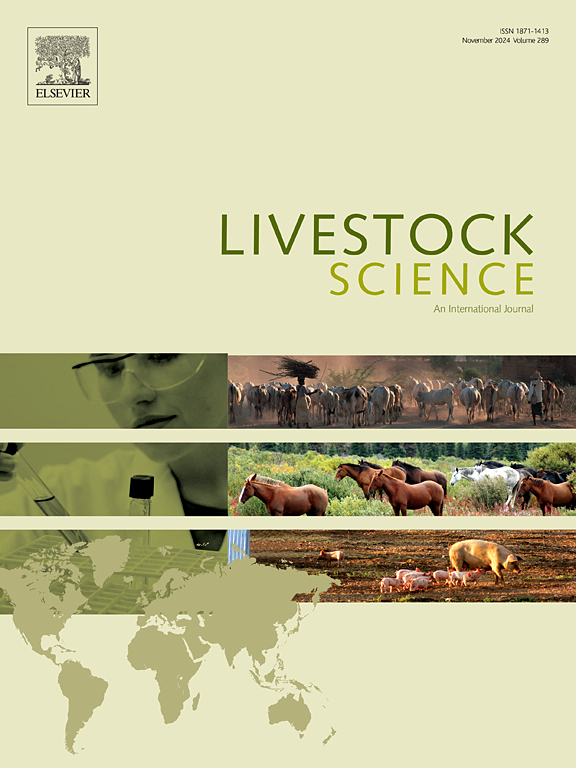Infrared thermography of different tear staining scores in pigs
IF 1.8
3区 农林科学
Q2 AGRICULTURE, DAIRY & ANIMAL SCIENCE
引用次数: 0
Abstract
Tear staining is increasingly suggested as a potential indicator for pig welfare. However, current research outcomes on tear staining are inconclusive. There is therefore a need for more information on this potential indicator. The aim of this study was to assess the relationship between tear staining scores and infrared thermography (IRT) of the inner canthus of the eye (with eye temperature relating to emotional states). We expected that pigs with a more severe tear staining score would have a higher eye IRT value. Pigs of a high-welfare research herd were assessed for tear staining using a 6-point scoring scale. Twenty-four female pigs with tear staining scores from 0 to 3 were selected, while scores 4 and 5 did not occur. Pigs were subjected to IRT of the right eye, in a test area specially constructed for IRT. Data were analysed in a generalised linear mixed model with IRT value as response variable and tear staining score, age and temperature-humidity index as predictor variables. The results showed no significant relationship between tear staining score and IRT values. The average IRT value was 37.1 ± 0.34, with the highest IRT values in tear staining score 3. The pigs’ age did not influence the outcomes. In this small-scale study we did not find a relationship between tear staining and eye IRT. Nevertheless, the outcomes show that tear staining is prevalent also in high welfare systems and we therefore urge for caution in using tear staining as a welfare indicator.

猪不同泪液染色评分的红外热成像
泪液染色越来越多地被认为是猪福利的潜在指标。然而,目前关于泪液染色的研究结果尚无定论。因此,需要更多关于这一潜在指标的资料。本研究的目的是评估泪液染色评分与眼内眦红外热成像(IRT)之间的关系(眼温与情绪状态有关)。我们预计泪液染色评分越严重的猪眼IRT值越高。采用6分计分法对一个高福利研究群的猪进行泪液染色评估。选取泪液染色评分为0 ~ 3分的母猪24头,泪液染色评分为4分和5分的母猪均未出现。在专门为IRT构建的试验区对猪进行右眼IRT。数据分析采用广义线性混合模型,IRT值为反应变量,泪液染色评分、年龄和温湿度指数为预测变量。结果显示泪液染色评分与IRT值无显著相关性。平均IRT值为37.1±0.34,泪液染色评分3分时IRT值最高。猪的年龄对结果没有影响。在这个小规模的研究中,我们没有发现泪液染色和眼睛IRT之间的关系。然而,结果表明泪液染色在高福利制度中也很普遍,因此我们敦促谨慎使用泪液染色作为福利指标。
本文章由计算机程序翻译,如有差异,请以英文原文为准。
求助全文
约1分钟内获得全文
求助全文
来源期刊

Livestock Science
农林科学-奶制品与动物科学
CiteScore
4.30
自引率
5.60%
发文量
237
审稿时长
3 months
期刊介绍:
Livestock Science promotes the sound development of the livestock sector by publishing original, peer-reviewed research and review articles covering all aspects of this broad field. The journal welcomes submissions on the avant-garde areas of animal genetics, breeding, growth, reproduction, nutrition, physiology, and behaviour in addition to genetic resources, welfare, ethics, health, management and production systems. The high-quality content of this journal reflects the truly international nature of this broad area of research.
 求助内容:
求助内容: 应助结果提醒方式:
应助结果提醒方式:


